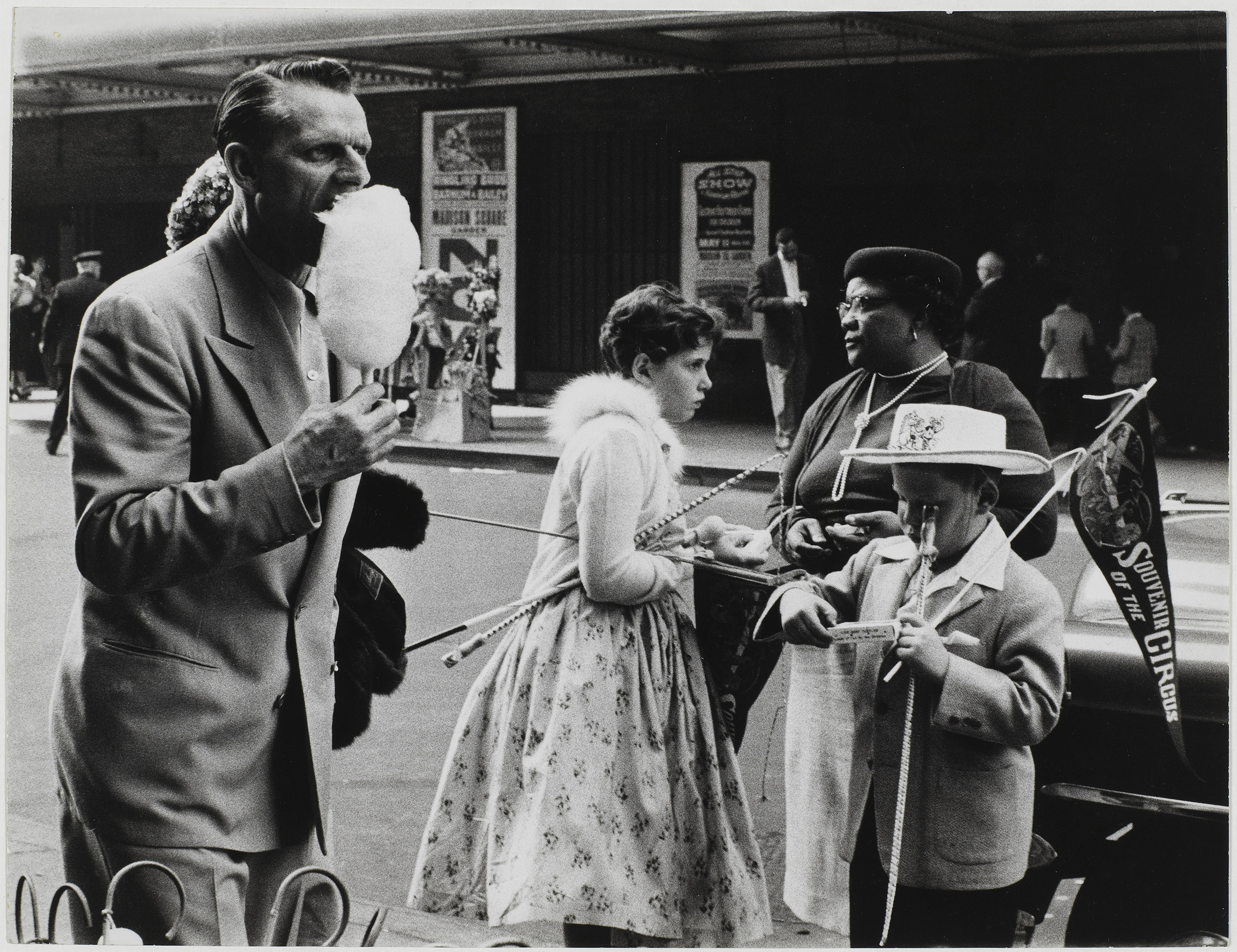I walked off the street into the François Morellet exhibit knowing very little about the artist. A fixture of the European art world, Morellet suffered bizarre career neglect in the States. Now on view until June 2, a revitalizing exhibition of key works from the 1950s to 2000s will be on view at Dia: Chelsea. I spoke to the curator Beatrice Gross about the bittersweet timing of events (Morellet passed away in 2016, months prior to the exhibition pitch. Gross credits Dia director Jessica Morgan with the idea for the show). Why the delay in an American reception?
“Geography doesn’t explain everything,” Gross explains over the phone. Having grown up in France, Gross had no choice but to know him well. “He’s a fixture. If you are interested at all in contemporary art and conceptual art, he’s one of the first names you encounter.” Of course, Morellet exhibited in the States. “There were group shows, there were solo shows, a major survey show that came to the Brooklyn Museum in the 80s,” recaps Gross.
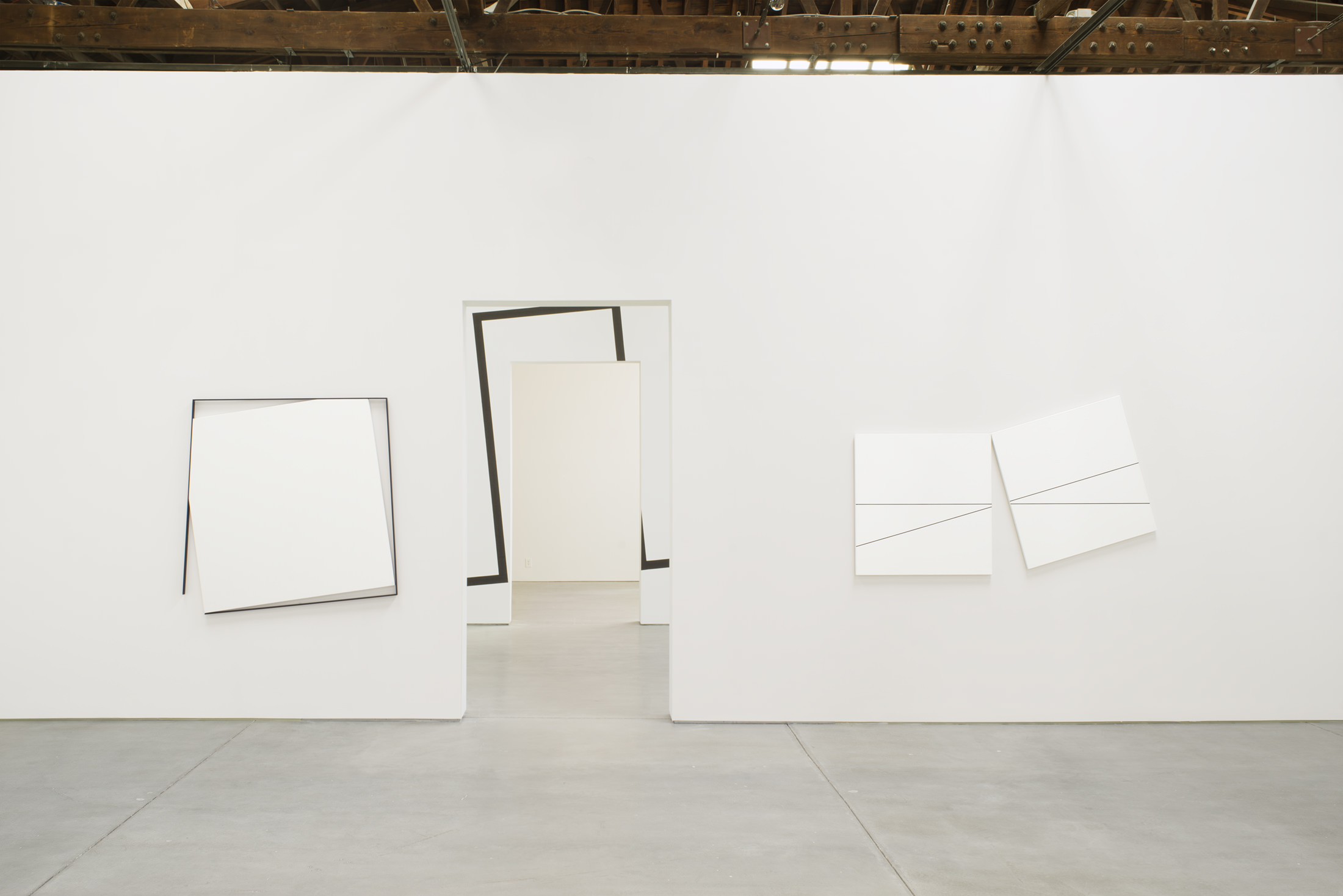
François Morellet
installation view
Dia:Chelsea, 545 West 22nd Street, New York.
Courtesy of Artists Rights Society (ARS), New York/ADAGP, Paris. Photo: Bill Jacobson Studio, New York. Courtesy Dia Art Foundation, New York.
Popularly ensconced as something dissociated from Europe, postwar art in the United States was something Americans were doing. The organizers of the Dia show subtly address this ahistorical chauvinism: a hostility to European counterparts, an inability to treat art as a networked or diasporic phenomenon (I spoke at length with Gross about the biases and erasures of the postwar art period: an institutional reluctance “to accept a history of geometric abstraction coming from Europe,” as Gross put it).
Rather than overtly reference these continental biases, however, the show leaves space for Morellet to surprise, instruct, and occasion different awareness.
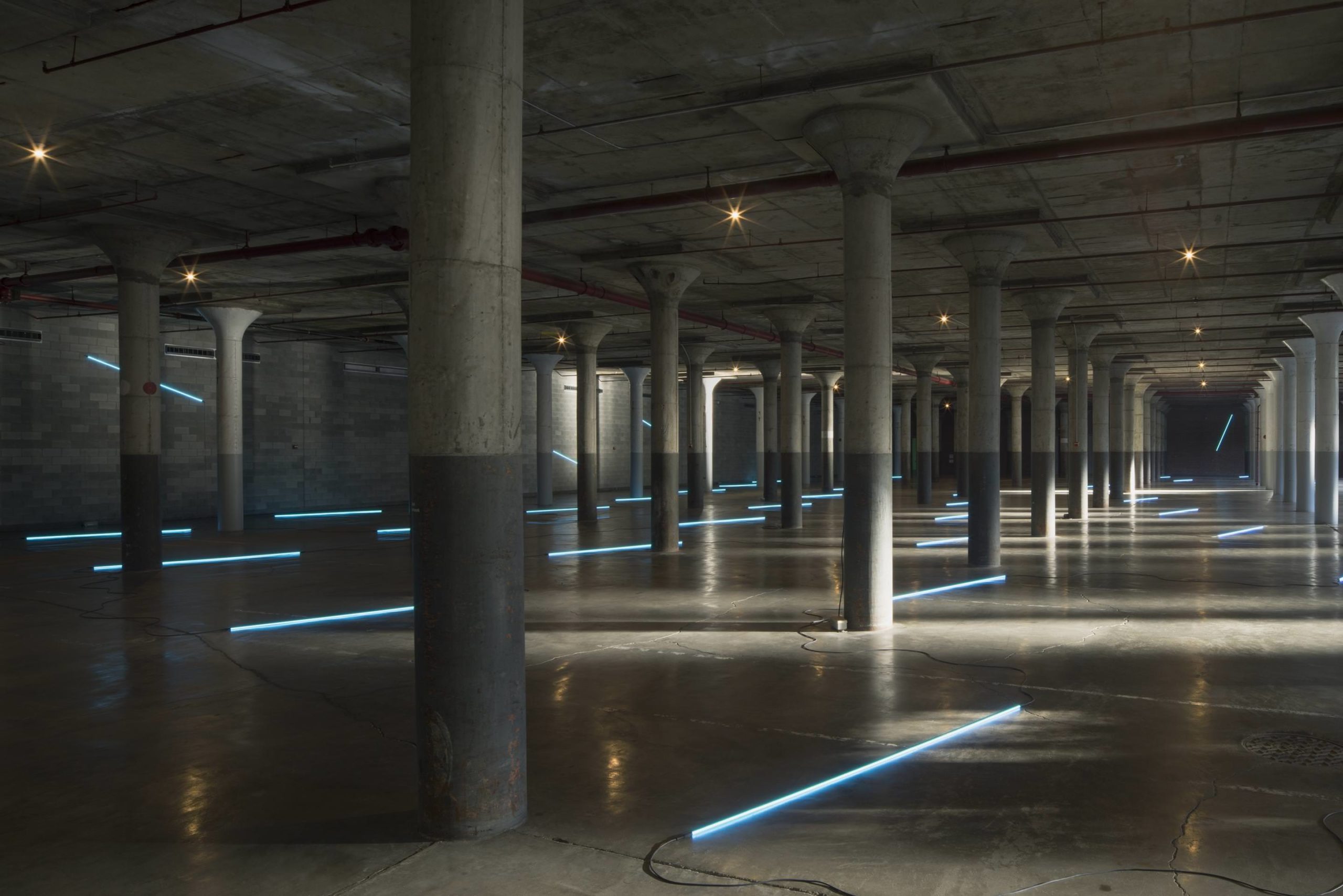
François Morellet
No End Neon
1990/2017
Dia:Beacon, Beacon, New York.
Courtesy Artists Rights Society (ARS), New York/ADAGP, Paris. Photo: Bill Jacobson Studio, New York. Courtesy Dia Art Foundation, New York.
Key works from the 1950s through the 2000s are assembled under the barnlike beams of Dia. You walk through the gallery rooms in step with Morellet’s shape-shifting practice.
A prolific painter, sculptor, and installation artist, Morellet used predetermined systems (mathematical formulas) to generate his early geometric abstractions. Morellet would disrupt the geometric regularity of his compositions by referencing a telephone book or the irregular number Pi. Random digits decided where his colors and lines would go. These were tactics to outsource artist decisions. Morellet wanted to get out of the way—to let the strange, optical clash of order and chance do its thing.
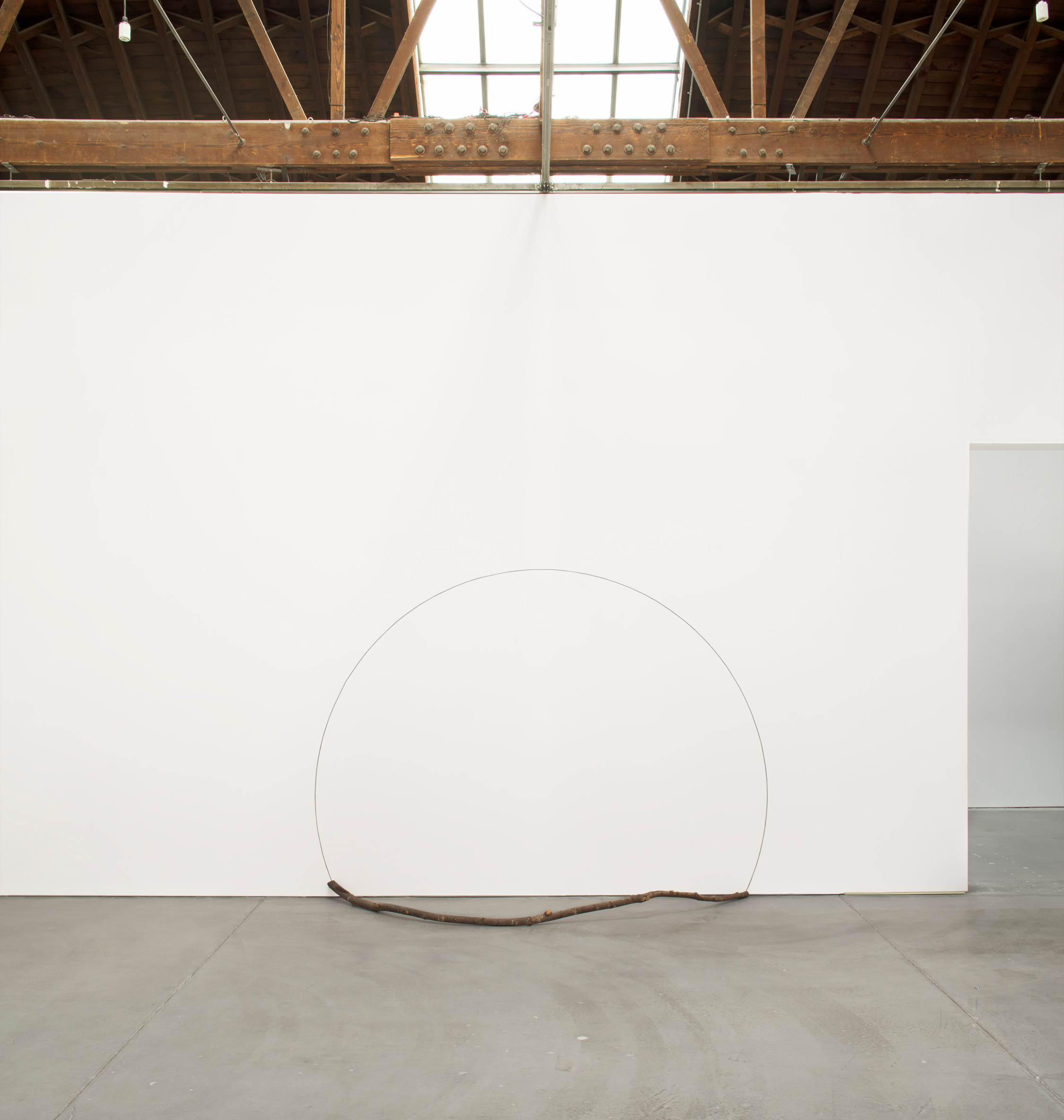
François Morellet
Arcs de cercle complémentaires n° 3 (Géométree n° 5C) (Complementary Arcs of Circle n. 3 [Geometree n. 5C])
1983.
Museum Voorlinden, Wassenaar, Netherlands.
Courtesy of Artists Rights Society (ARS), New York/ADAGP, Paris. Photo: Bill Jacobson Studio, New York. Courtesy Dia Art Foundation, New York.
By the 70s, Morellet’s art turns more sculptural or installation based; the picture plane spills out into the physical space of the gallery. He bends frames open, tilts canvases, lets a foraged tree branch finish up for a half-painted circle. For an artist expunging subjective decision-making from his work, there’s poetry and humor writ all over it.
A reconfiguration of Morellet’s 1964 piece “Reflections in Water Distorted by the Spectator” is given a room of its own. The gallery walls are painted black. Water lies still in a basin of cut aluminum. A neon grid—mounted atop the ceiling—casts an electric reflection in the water. Visitors can send ripples through the pool by pulling a lever (it looks like a supersized stick shift yanked from a Euro sports car). It’s an inky and charged piece.
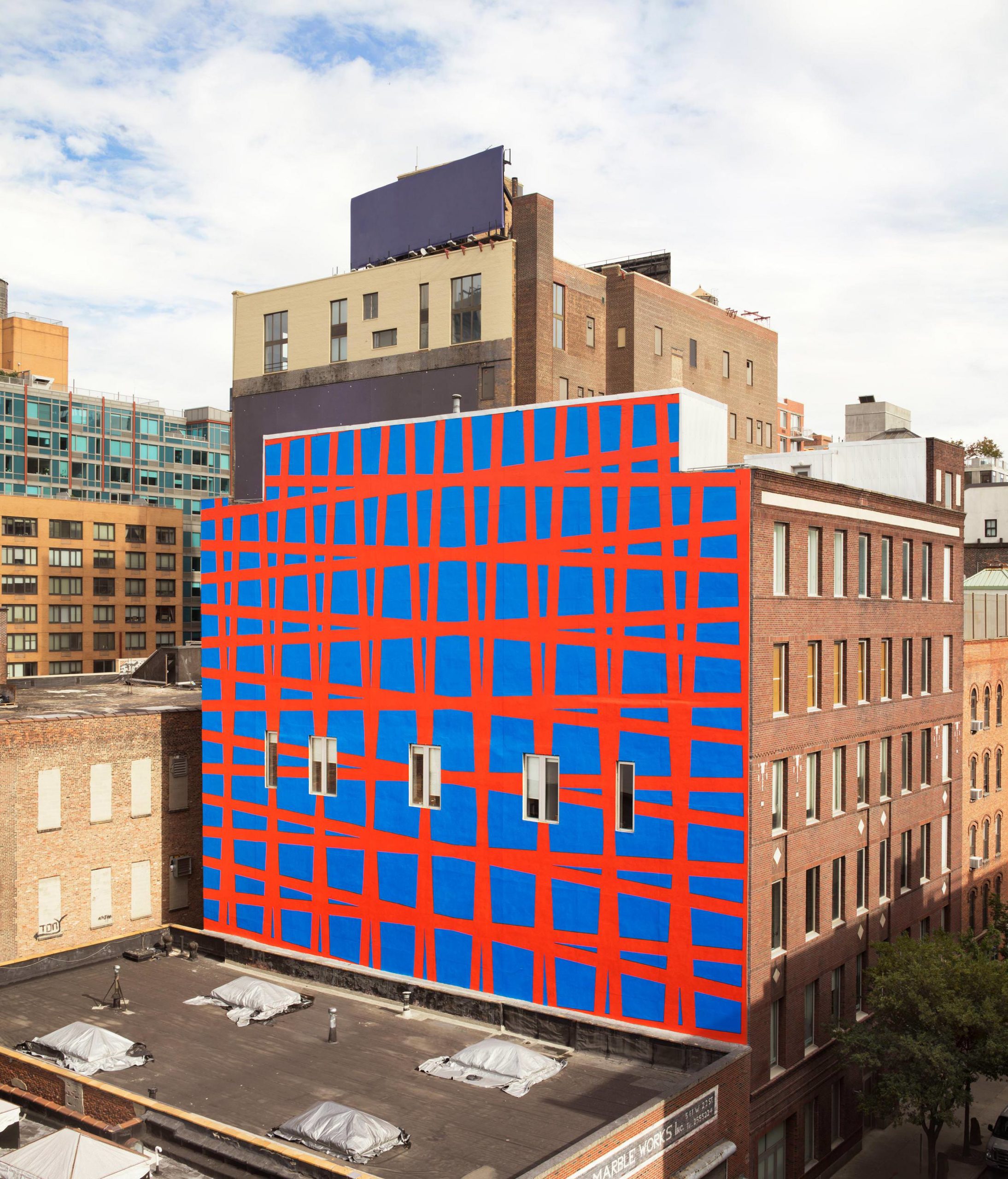
François Morellet
Trames 3°-87°-93°-183°
1971/2017
Dia:Chelsea, 545 West 22nd Street, New York.
Courtesy of Artists Rights Society (ARS), New York/ADAGP, Paris. Photo: Bill Jacobson Studio, New York. Courtesy Dia Art Foundation, New York.
In addition to the works on view at Dia: Chelsea, Morellet’s No End Neon (1990/2017) takes over one of Dia: Beacon’s lower-floor galleries. A mural of cherry-red lines and a field of blue also transform the facade of Dia’s West 22nd Street building. Everything’s slightly tilted (by three degrees, to be exact). Morellet stretches the dimensional possibilities of a painted surface, destabilizing the vertical orientation of a building. I spoke at length with Beatrice Gross about the original 1971 mural, and why New York City’s orthogonal building plan was a perfect backdrop for a contemporary restaging. As Gross puts it, Morellet’s art is “both a combination and a clash. Something is a little off, there’s a twist, a provocation, both artistically and on an urban level.”
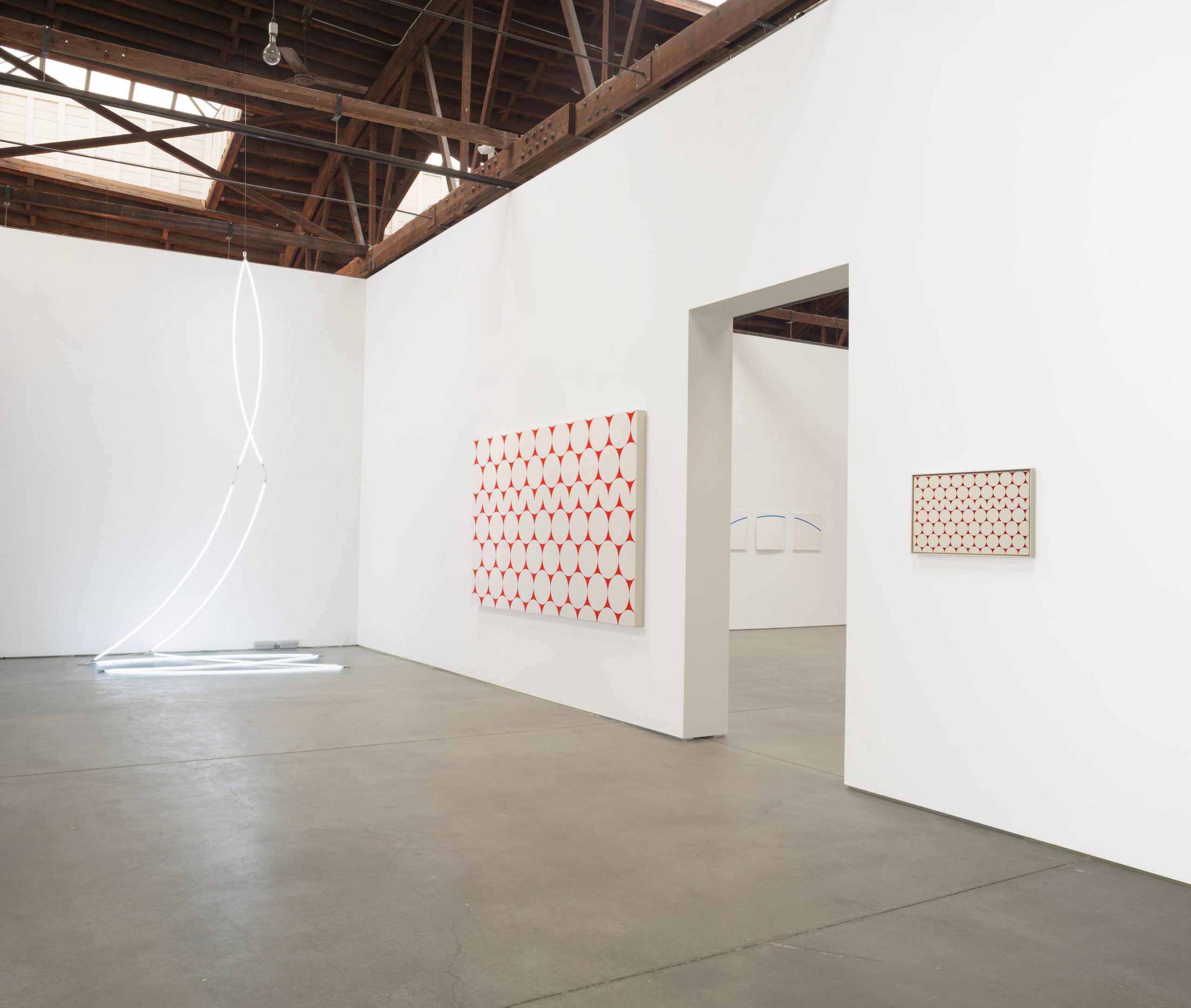
François Morellet
installation view
Dia:Chelsea, 545 West 22nd Street, New York.
Courtesy of Artists Rights Society (ARS), New York/ADAGP, Paris. Photo: Bill Jacobson Studio, New York. Courtesy Dia Art Foundation, New York.





